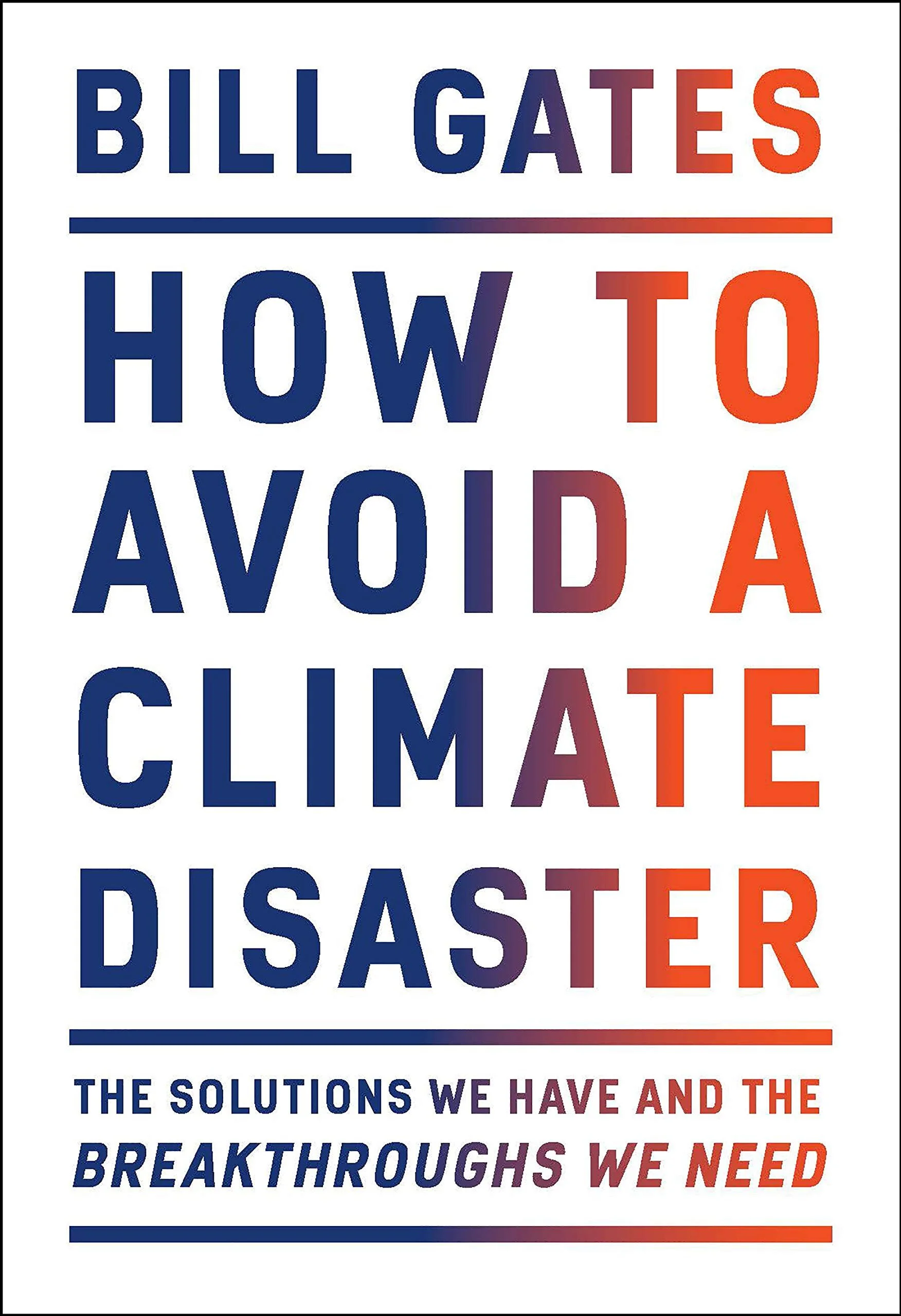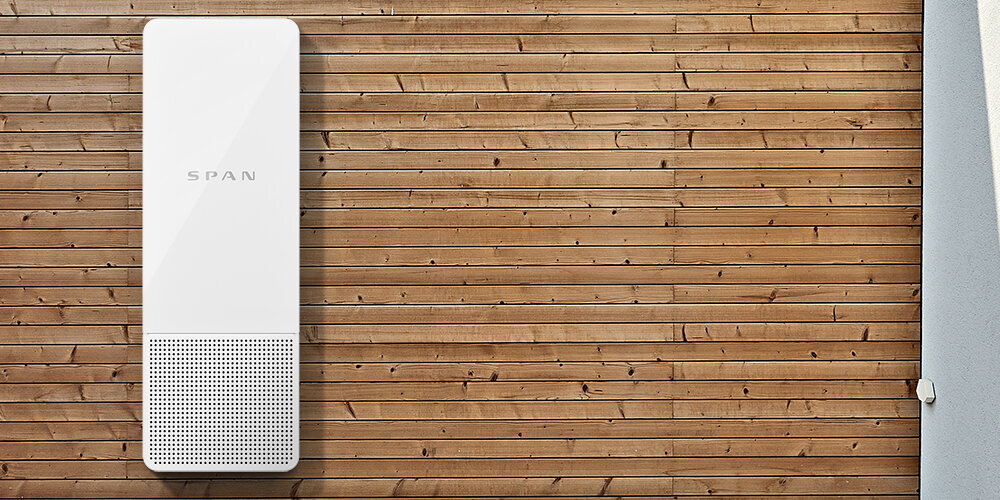Why I’m Buying Into The Great Teslafication
Last year, I committed to reading more books and attending more webinars to learn about the causes of climate change and the solutions for our crisis. Although I personally have a natural desire to jump straight into the solutions and learn from the people and companies that are making an impact, I realized that I knew very little about the science underlying the climate crisis.
Going through the Climate Reality Project Leadership training in April helped me with some perspective. The 4-part seminar series not only walked me through a crash course on the science of climate change, but it also highlighted the connection between global warming and present-day devastation on the planet, and lastly "what we're doing and why it's not too late" spoken like only an eternally optimistic Al Gore can.
Source: Penguin Random House
I continued my education, finding optimism in Paul Hawken's Drawdown, which I constantly reference as an index for climate change solutions that provide ratings based on impact, reach, and cost. And most recently, I picked up Bill Gates' book titled How to Avoid a Climate Disaster. Gates' book reads like a conversation — breaking the climate crisis down into intuitive categories that aren't so scientific or technical by design. Yes, he gets into the science behind emissions in industrial manufacturing, or the urgency to electrify everything, and even the challenge to begin focusing on climate adaptation, but the underlying theme behind each chapter is how climate change is caused by a cycle of commercialization that has evolved over time and influences our personal behaviors.
Our City, Our Responsibility
If you've been following along in my writing journey to learn more about the impact of buildings and cities, you've probably heard my thesis:
If our behaviors control how humanity impacts climate change, then our cities are the first and last battleground for defeating the global climate crisis.
I don't mean to dramatize the impact of our built environment on the natural environment, but if you look closer, it's easy to see that:
Our urban environments are shaped by our desires and needs — larger buildings with more space, wider streets to make more room for our personal vehicles, and the list goes on...
Although our cities are a product of centuries of incremental improvements to suit our needs, our built environment has an increasing influence on how we behave — how we travel, how we meet each other, again the list goes on...
Today, cities house more than half of the global population and account for more than 60% of greenhouse gas emissions, by 2050, more than 75% of the population will live in urban cores and cities around the world
To adapt to the growing population, cities around the world have prioritized infrastructure spending to improve access to energy, while government policies are largely responsible for how and where to spend public funds
While this research has solidified my interest in buildings and cities as an amplifier for climate action, there are dozens of subcategories within this source, including building decarbonization, alternative refrigerants, insulation, and smart technology. As a builder and designer, I've built all-electric housing and have a natural inclination to learn about consumer technology, which has led me to the intersection of building decarbonization and smart technology.
Tesla for X: Electrify Everything
Back to Gates' book, he starts his first chapter called How We Plug In, by saying "The energy we give up by not using coal, natural gas, and oil has to come from somewhere, and mostly it will come from clean electricity. This is why I'm covering electricity first even though manufacturing is responsible for more emissions." Throughout the chapter, he doesn't make a plea for people to adjust their behaviors and instead focuses on the critical need to decarbonize our energy production.
“If a genie offered me one wish, a single breakthrough in just one activity that drives climate change, I'd pick making electricity.”
Bill Gates, How To Avoid a Climate Disaster
By transitioning from burning fossil fuels to renewable energy sources, we stand a chance to make our cities cleaner, and in the process, make clean energy a cheaper alternative. He concludes the chapter, stating," If a genie offered me one wish, a single breakthrough in just one activity that drives climate change, I'd pick making electricity: It's going to play a big role in decarbonizing other parts of the physical economy."
The critical point in this transition is hidden between the lines — electrifying our homes and workplaces creates the opportunity for consumer technology innovation, by creating a clean source of energy to power smart devices, and home automation systems.
This year, while developing our all-electric ADUs, I've also committed to spending more of my time working with grassroots organizations and non-profits like the Climate Reality Project Bay Area Chapter to help draft and write policy memos and proposals. As a part of a 90-day policy challenge, my Alameda County Policy Action Squad decided to tackle building decarbonization — the act of electrifying new and existing buildings. Although local policy has made building electrification a priority for new construction projects in progressive cities like Berkeley, San Jose, and Oakland, there hasn't been a comparable effort placed on electrifying existing housing stock.
This is where private innovation steps in.
Where the reach of public policy influence ends, private industry takes over, creating commercial solutions that address collective demands of private citizens through innovation and design.
Because public policy attempts to move our cities forward collectively, it runs into problems with consensus, education, and inclusion. Where the reach of public policy influence ends, private industry takes over, creating commercial solutions that address the collective demands of private citizens through innovation and design. As a result, we’ve slowly added better, cheaper insulation to our homes during renovations, installed more efficient tankless water heaters when our old natural gas tanks fail, and even become fanatics of electric vehicles.
Sometimes, as is the case with consumer brands like Tesla, a fanatical following can push collective demand and progressive change through vanity, envy, and prestige. It's no surprise that Tesla’s vehicles have promoted the adoption of EVs over ICE (internal combustion engines), which has seen a spike of 36% from 2020 to 2021 alone, accounting for nearly 3 million EVs sold in 2021 for the first time ever. While there are certainly negative aspects of manufacturing more cars vs. reducing manufacturing as a whole, it's scientifically proven that driving electric is quantifiably better for the planet than driving your old gas guzzler.
Tesla's success has spurred the growth of commercial technology innovation in building electrification. A whole new industry I've been calling Tesla for X, has been quietly growing, supported by surging climate awareness and demand for climate-conscious products. But reducing your carbon footprint for posterity and self-awareness can only push commercial demand so far. Money is the often barrier to entry.
Design, the Bottom-Up Solution to Building Decarbonization
Enter Span, Gradient, Radiator Labs, and a growing list of smart devices that power your home or apartment, manage your electricity usage, and make your home more efficient and self-sufficient. Boosted by a growing demand for smarter, more efficient electricity usage, self-sufficient energy production from rooftop solar, and tied together with shiny, Apple-like, bright white surfaces, this new generation of smart home infrastructure devices is getting noticed by homeowners and property owners.
Not only do they promise a laundry list of benefits from efficiency to sleek design, but they promise to save you money, and arguably make your homes safer.
Here's what Span says:
Span is developing products to enable rapid adoption of renewable energy and deliver an intuitive interface for the home. We believe that powering your home with clean energy should be a simple and delightful experience that is technology-forward and human-centered.
Source: Bould Design
And Gradient, formerly known as Treau:
Gradient is rethinking HVAC. We build products that are good for the planet and great at keeping your home comfortable, starting with a replacement for the window AC. Gradient is founded by thermal scientists and engineers and flanked by talent from juggernauts like Tesla and Nest, all aligned behind a mission to cool the world. Gradient aims to reduce the carbon emissions from heating and cooling systems, which represent 20% of emissions globally.
Source: Cooling Post
As we continue to spend more time at home, away from public spaces, we'll find more opportunities and larger budgets to spend on our living spaces. Our transit budgets, entertainment budgets, and travel budgets are finding new use in home renovation and upgrades. Encouraged by public sentiment, and boosted by world-class design, our homes are transforming into smart, self-sufficient energy sources that are made possible through top-down policy mandates and bottom-up consumer electronics that will make building decarbonization a happy side effect.





